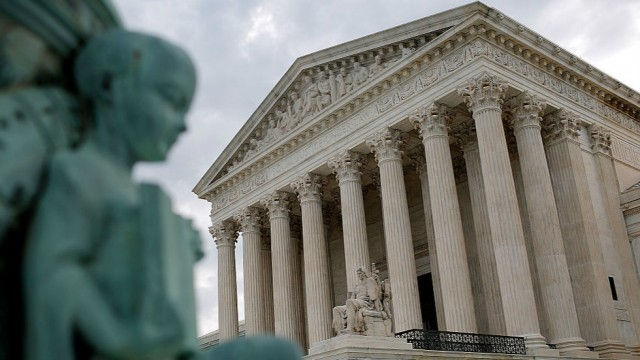How Gorsuch's confirmation shapes the next Supreme Court battle
- Op-ed published in The Hill
- Apr 14, 2017
- 5 min read
With another Supreme Court vacancy looming, perhaps as early as this summer, the likely players in the next confirmation fight would be wise to learn from the successful nomination of Neil Gorsuch.
Because every Supreme Court confirmation battle is unique, each one teaches us something new about what strategies, nominee qualities, and political facts on the ground result in a successful confirmation.
Read more of Committee for Justice President Curt Levey's op-ed in The Hill.
Don’t overplay a weak hand
Senate Democrats went into the Gorsuch confirmation fight without any good options. They could either attempt a filibuster, which Republicans would very likely overcome with the “nuclear option,” or acquiesce in a straight confirmation vote, where Gorsuch was sure to be confirmed by the Republican majority.
Senate Democrats went into the Gorsuch confirmation fight without any good options. They could either attempt a filibuster, which Republicans would very likely overcome with the “nuclear option,” or acquiesce in a straight confirmation vote, where Gorsuch was sure to be confirmed by the Republican majority.
With no real chance of ultimately prevailing, the smart move would have been for Democratic leaders to decide which of the 21 potential nominees was least objectionable and let the president know that nominee would provide a path of least resistance. Were the president to ignore their advice, Democrats would advance their cause anyway by taking away the GOP’s argument that “if Democrats filibuster Gorsuch, they'll filibuster anyone.”
That would have been the way to make the best of a weak hand. Instead, Minority Leader Chuck Schumer (D-N.Y.) acted as if he had the upper hand, declaring, “It's hard for me to imagine a nominee … that we could support.”
A few moderate Democratic senators like Sen. Chris Coons (D-Del.) did signal a willingness to compromise. But they waited until after Democrats failed to land any substantial blows at the Gorsuch hearings. At that point, their position was so weak that Republicans had no incentive to agree to even a face-saving compromise.
The time for Democrats to seek a compromise was shortly after Gorsuch was nominated or perhaps even before a nominee was named. Feigning confidence by waiting until the last minute to negotiate makes no sense given a hand that is getting weaker by the day. If Democrats again hold a weak hand when the next vacancy occurs, they would be wise to cut their losses and do so early.
Partisanship will prevail
The effort to confirm Justice Gorsuch, headed by the White House Counsel’s Office, Majority Leader Mitch McConnell (R-Ky.), former Sen. Kelly Ayotte and Trump judicial advisor Leonard Leo, was the best judicial confirmation campaign ever run. It included millions of dollars in advertising aimed at vulnerable Senate Democrats. Despite that and a masterful performance by the nominee, only four Senate Democrats voted to block a filibuster, half the number needed.
One can only conclude that, in this era of bitter partisanship, no confirmation strategy can depend on winning a significant number of opposition party votes. This will be particularly relevant if Republicans lose control of the Senate in the 2018 election.
Even with the president’s party in control of the Senate, the key to winning a difficult confirmation battle will be keeping the party entirely united. Even more so than when six Republicans voted against Robert Bork in 1987, defections will be deadly.
Sure, senators’ partisan approach to Supreme Court nominations might soften if voters start to penalize them for it. However, Democrats’ failed effort to use the GOP “obstruction” of Judge Garland to their advantage in 2016 Senate campaigns indicates change is not in sight.
Hit the sweet spot
In Neil Gorsuch, President Trump chose a nominee with a record that excited and unified conservatives, while at the same time containing very few controversial decisions or remarks that opponents could use to mischaracterize Gorsuch as a conservative judicial activist or as hostile to minorities.
As a result, there were no conservatives fretting over “another Kennedy or O’Connor,” and Democrats were forced to focus on a single Gorsuch opinion about a trucker. The pickings for opponents have never been slimmer in modern Supreme Court confirmation battles.
A Supreme Court nominee like Gorsuch, whose record falls in the sweet spot that prevents both effective attacks by opponents and lack of enthusiasm among supporters, is hard to find. But the smooth-sailing of Gorsuch’s nomination makes it all the more likely that President Trump and his successors in both parties will focus their search on such nominees.
It’s not about the president
Right after Gorsuch was nominated, I predicted that “Democrats [will] focus this battle on President Trump as much as on the nominee.”
As predicted, Democrats brought up the president at every opportunity and tried to make the case that Gorsuch would not be truly independent of the man who appointed him when the president’s executive orders and other actions came before the Court. Some Democrats even called for Gorsuch’s confirmation vote to be postponed until the investigations into possible Russian hacking were concluded.
This prediction was an easy call given both the dearth of targets in the nominee's record and the controversy and animus swirling around the president. If ever a Supreme Court nominee could be undermined by tying him to the president, it would be President Trump’s first nominee. Yet this strategy failed without ever gaining traction.
It’s fair to conclude that the work of a federal judge, like Neil Gorsuch, is too far removed from White House politics for such a strategy to have any resonance. In any case, this strategy is not worth repeating, unless perhaps the nominee is an integral part of the president’s administration (think FDR’s appointment of his attorney general, Robert Jackson, to the Supreme Court).
It’s about control of the Senate
As the Supreme Court confirmation process has become more politicized and partisan over the last 30 years, the outcomes have grown increasingly dependent on control of the Senate. Fortunately for recent presidents, seven of the last eight Supreme Court nominations — not including the withdrawn nomination of Harriet Miers — have come at a time when the president’s party had a Senate majority. All seven of those nominees were confirmed.
In the eighth case, where President Obama nominated Merrick Garland with Republicans in control of the Senate, the nomination failed. In other words, control of the Senate has been determinative going back to the nomination of Ruth Bader Ginsburg in 1993.
Given just the one counterexample of Judge Garland, the point is not that a Supreme Court nominee can't be confirmed with the opposing party in control of the Senate. However, because it has been more than quarter of a century since those circumstances resulted in confirmation — Clarence Thomas was narrowly confirmed by a Democratic Senate in 1991 — all bets are off if the government is split.
The relatively weak correlation between which parties control the Senate and White House ensures that sometime soon, a Supreme Court nominee will again face a hostile Senate. The next time that occurs, the resulting fight may well make Clarence Thomas’ confirmation look like a picnic.





